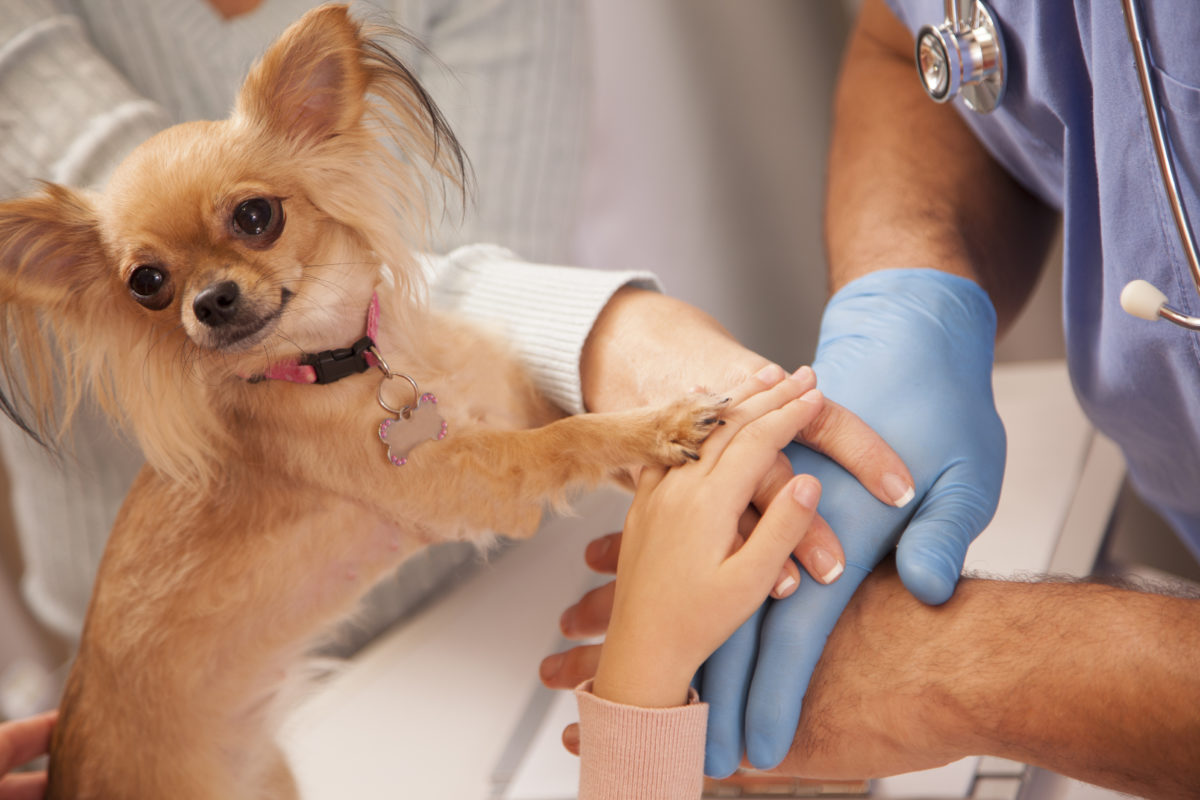Joyce A. Login, DVM
The basic premise of Fear Free is that we ensure our patients have a comfortable experience while preventing fear, anxiety, and stress (FAS). One area where this can be impacted is during the physical examination. Keeping the patient calm and relaxed can be difficult when they’re healthy — if they have pain from an underlying condition like osteoarthritis it can be extra challenging.
We may view our examination as a series of unrelated techniques, however, each procedure can elicit distress, discomfort, or pain that can cause “trigger stacking.” This is the cumulative effect of stressors and can be a breaking point for these animals.1 There are already sights, sounds, and smells that act as stressors. When piled up, procedures that individually seem minor can cause an animal already in pain to more quickly reach their threshold. Things like abdominal palpation, rectal exams, or venipunctures are bad enough2·5, but for a dog or cat with osteoarthritis their threshold is conceivably lower. How can we maintain the quality of the visit and avoid causing more pain? We can use the strategies of Considerate Approach (CA) and Gentle Control (GC).
The Considerate Approach reduces stressors occurring before the exam and creates a relaxing atmosphere.6 Providing nonslip surfaces and covering exam tables with soft, warm materials can make a big difference. Having all supplies ready to go in the room reduces the disruption of people coming in and out. Using pheromones, dimming lights, adjusting our approach, and minimizing noises will produce a more tranquil environment for both the pets and the clients.
When a patient is in pain, using Gentle Control is crucial. It may cause more pain to pick up a dog and put her on the table or to pull an unwilling cat out of his carrier. Examining them where they are most comfortable while using minimal restraint is ideal.2·5 If possible, don’t place the animal in positions where they are held down or stretched, such as lateral recumbency. If unavoidable, gently guide them into position rather than manhandling them.2 Prioritize procedures from least to most painful and determine if it’s necessary. If the animal is struggling or showing other signs of emotional distress it can be the best decision to sedate or reschedule.
Assuring our clients that their pets can receive medical care without having to suffer from stress and anxiety is the essence of Fear Free. It can be challenging when the animal has a painful condition such as osteoarthritis. In that situation, it is crucial that we use all the tools at our disposal to avoid stress and ensure we do not inflict more pain. This can be accomplished by being aware of and minimizing stressors to avoid trigger stacking. Also, by adhering to the techniques of CA and GC we can less en any pain caused by disruptions, positioning, or struggling. A little extra TLC can go a long way in making sure that we “do no harm” as we give these animals the best care for a long and peaceful life.
References
-
- 1. Edwards, P. T., Smith, B. P., McArthur, M. L., & Hazel, S. J. (2019). Fearful Fido: Investigating dog experience in the veterinary context in an effort to reduce distress. Applied Animal Behaviour Science.
-
- 2. Yin, S., Low Stress Handling, Restraint, and Behavior modification of Dogs and Cats. Yin S—Davis, California: CattleDog Publishing, 2009.
-
- 3. Overall, K.L. Your Complete Guide to Reducing Fear in Veterinary Patients. 2014. Available online: http://dvm360.com/view/your-complete-guide-reducing-fear-veterinary-patients (accessed on 28June 2022).
-
- 4. Lloyd, J. (2017). Minimising Stress for Patients in the Veterinary Hospital: Why It Is Important and What Can Be Done about It. Veterinary Sciences, 4(4), 22.
-
- 5. Herron M. The Pet-friendly Veterinary Practice: A Guide for Practitioners Vet Clin Small Anim 44 (2014) 451–481.
-
- 6. Martin, D. The Veterinary Technician’s Role in Implementing Fear Free, Today’s Veterinary Nurse, July/August 2017, Volume 2, Issue 4.


 This article is brought to you in collaboration with our friends at Zoetis.NA-01949R1
This article is brought to you in collaboration with our friends at Zoetis.NA-01949R1

